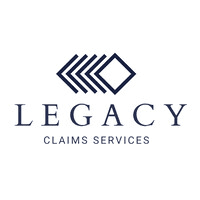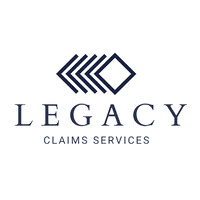Not sure if Keystone Insurers Group is right for you?
Talk to a Franchise Advisor who can match you with your perfect franchise based on your goals, experience, and investment range.
Talk to an ExpertKeystone Insurers Group
How much does Keystone Insurers Group cost?
Initial Investment Range
$27,750 to $99,200
Franchise Fee
$5,000 to $20,000
You will sell insurance products under powers of appointment contained in certain agency/insurance company agreements we, and our affiliates, negotiate and maintain with insurance companies.
Enjoy our partial free risk analysis below
Unlock the full risk analysis to access 9 more categories covering 100+ risks.
Keystone Insurers Group July 31, 2024 FDD Risk Analysis
Free FDD Library AI Analysis Date: July 16, 2025
DISCLAIMER: Not Legal Advice - For Informational Purposes Only. Consult With Qualified Franchise Professionals.
Franchisor Stability Risks
Start HereDisclosure of Franchisor's Financial Instability
Low Risk
Explanation
This risk was not identified. The audited financial statements for the predecessor entity and recent unaudited financials for Keystone Insurers Group, LLC (Keystone LLC) show a strong financial position, including significant positive net worth and operating cash flow. There are no indicators of financial instability like a going concern note. A financially healthy franchisor is better positioned to provide support and grow the brand, which is a positive factor for your investment.
Potential Mitigations
- An accountant should review the financial statements, including footnotes, to independently confirm the franchisor's financial health and stability.
- Discuss the franchisor's financial strategy and plans for future investments in the system with your business advisor.
- Ask your attorney to verify if any financial performance bonds are required by the state, which can offer protection if a franchisor's financial situation deteriorates.
High Franchisee Turnover
Medium Risk
Explanation
Item 20 data reveals a notable number of franchise exits over the past three years through terminations, cessations of operation, and reacquisitions by the franchisor's parent company. While not at a critical level, this pattern suggests that a material number of franchisees leave the system annually. This turnover could indicate challenges with the business model, franchisee dissatisfaction, or difficulties in meeting the franchisor's requirements, which may impact your own potential for long-term success.
Potential Mitigations
- It is crucial to contact a significant number of former franchisees listed in Item 20 to understand their reasons for leaving the system.
- A business advisor can help you analyze the turnover rates in Item 20 against any available industry benchmarks.
- Your attorney should help you formulate specific questions for the franchisor regarding the circumstances of these departures.
Rapid System Growth
Medium Risk
Explanation
The franchisor has been expanding its franchised and company-owned outlet count at a notable pace, particularly in the most recent year. While growth can be a positive sign, rapid expansion can sometimes strain a franchisor's ability to provide adequate and timely support, training, and resources to all franchisees. You should consider if the franchisor's support infrastructure, as described in Item 11, appears robust enough to handle this growth.
Potential Mitigations
- Engaging a business advisor to assess the franchisor's support infrastructure in relation to its growth rate can provide valuable perspective.
- Posing questions to the franchisor about how they plan to scale support to match the growing number of outlets is a prudent step.
- In discussions with current franchisees, it's wise to ask about their recent experiences with the quality and timeliness of franchisor support.
New/Unproven Franchise System
Low Risk
Explanation
This risk was not identified. The franchisor's predecessor began offering franchises in 1999, indicating a long-established system with significant operational history. An unproven system presents higher risks related to the viability of the business model and the adequacy of support, so the long track record here is a positive indicator. However, a recent corporate reorganization warrants a careful review of current management and strategy.
Potential Mitigations
- Inquiring with long-tenured franchisees about the evolution of the system and its support can provide historical context.
- A business advisor can help you analyze how the franchisor has adapted to market changes over its long history.
- Your attorney should review the details of the recent corporate reorganization to understand its implications for the franchise relationship.
Possible Fad Business
Low Risk
Explanation
This risk was not identified. The franchise operates in the insurance industry, which is a well-established and essential sector of the economy, not a temporary trend or fad. A business based on a fad carries the risk of collapsing when consumer interest wanes, so the stable, long-term nature of the insurance market is a significant mitigating factor for this type of risk.
Potential Mitigations
- Your business advisor can help you research the long-term outlook for the independent insurance agency sector.
- Discussing the stability and trends within your local insurance market with an industry professional would be beneficial.
- An accountant can help you model financial projections based on the stable, long-term nature of the industry.
Inexperienced Management
Low Risk
Explanation
This risk was not identified. Item 2 of the FDD shows that the franchisor's management team has extensive and long-term experience in the insurance and franchise industries. Inexperienced leadership can pose a significant risk through poor strategic decisions and inadequate support. Therefore, the deep industry experience of the executive team is a positive attribute for the system.
Potential Mitigations
- A business advisor can help you research the backgrounds and track records of the key executives listed in Item 2.
- When speaking with current franchisees, asking about their perception of the management team's competence and vision is a valuable exercise.
- Your attorney can help you understand the roles and responsibilities of the key personnel within the franchise structure.
Private Equity Ownership
Medium Risk
Explanation
The franchisor's parent company, Keystone Agency Partners, LLC (KAP), was formed for the purpose of acquiring existing insurance agencies, a model characteristic of a private equity-backed aggregator. This ownership structure may create pressure to prioritize short-term financial returns for investors over the long-term health of franchisees. This could potentially manifest in fee increases, reduced support, or a focus on system growth over individual unit profitability.
Potential Mitigations
- A business advisor can help you research the parent company's reputation and its track record with other businesses it has acquired.
- Inquiring with franchisees who have been in the system before and after the parent company's involvement can reveal any changes in corporate culture or support.
- Your attorney should review the Franchise Agreement for terms that give the parent company broad rights to change the system or sell it.
Non-Disclosure of Parent Company
Medium Risk
Explanation
The franchisor entity, Keystone Insurers Group, LLC, is a recently formed company, yet the FDD does not include financial statements for its parent, Keystone Agency Partners, LLC (KAP). While the FDD provides financials for a predecessor entity, the financial strength of the ultimate parent company that now controls the system is not disclosed. This lack of transparency creates risk, as the parent's financial health is a key factor in the long-term stability and support of the franchise system.
Potential Mitigations
- Your accountant should carefully analyze the provided predecessor financials while noting the absence of parent company data.
- It is important to ask the franchisor directly for financial information about the parent company, KAP.
- Your attorney can advise on whether the lack of parent financials constitutes a material omission under franchise disclosure laws.
Predecessor History Issues
Low Risk
Explanation
This risk was not identified. The FDD discloses the franchisor's predecessor and provides information on its history, including litigation and bankruptcy, in Items 3 and 4. There are no indications of a troubled history, such as a pattern of lawsuits or financial failure, associated with the predecessor. A clean predecessor history suggests a more stable foundation for the current franchise system.
Potential Mitigations
- Asking long-tenured franchisees about their experiences under any predecessor entity can provide valuable historical perspective.
- A business advisor can help you conduct independent research on the predecessor's reputation and historical performance.
- Your attorney should confirm that all required predecessor information appears to be properly disclosed in the FDD.
Pattern of Litigation
Low Risk
Explanation
This risk was not identified. Item 3 of the FDD discloses two legal cases, neither of which suggests a pattern of fraud, misrepresentation, or other systemic issues in the franchisor's dealings with its franchisees. A history of significant franchisee-initiated litigation can be a major red flag, so its absence in this FDD is a positive indicator for the health of the franchise relationship.
Potential Mitigations
- Your attorney should still review the details of any disclosed litigation to understand the nature of the claims and their potential impact.
- It is good practice to ask current franchisees about their awareness of any disputes within the system, even those not rising to the level of disclosed litigation.
- A business advisor can help you research public records for any other legal disputes involving the franchisor or its principals.
Disclosure & Representation Risks
Example Risk: Franchisee Financial Obligations
Blue Risk
Explanation
This risk involves the financial obligations that a franchisee must meet, including initial fees, ongoing royalties, and other required payments. Understanding these obligations is crucial for long-term success.
Potential Mitigations
- Carefully review the Franchise Disclosure Document (FDD) and consult with a franchise attorney to fully understand all financial commitments before signing.
- Conduct regular risk assessments
- Implement monitoring and reporting systems
Unlock Full Risk Analysis
Purchase the complete risk review to see all 102 risks across all 10 categories.
Financial & Fee Risks
Example Risk: Franchisee Financial Obligations
Blue Risk
Explanation
This risk involves the financial obligations that a franchisee must meet, including initial fees, ongoing royalties, and other required payments. Understanding these obligations is crucial for long-term success.
Potential Mitigations
- Carefully review the Franchise Disclosure Document (FDD) and consult with a franchise attorney to fully understand all financial commitments before signing.
- Conduct regular risk assessments
- Implement monitoring and reporting systems
Unlock Full Risk Analysis
Purchase the complete risk review to see all 102 risks across all 10 categories.
Legal & Contract Risks
Example Risk: Franchisee Financial Obligations
Blue Risk
Explanation
This risk involves the financial obligations that a franchisee must meet, including initial fees, ongoing royalties, and other required payments. Understanding these obligations is crucial for long-term success.
Potential Mitigations
- Carefully review the Franchise Disclosure Document (FDD) and consult with a franchise attorney to fully understand all financial commitments before signing.
- Conduct regular risk assessments
- Implement monitoring and reporting systems
Unlock Full Risk Analysis
Purchase the complete risk review to see all 102 risks across all 10 categories.
Territory & Competition Risks
Example Risk: Franchisee Financial Obligations
Blue Risk
Explanation
This risk involves the financial obligations that a franchisee must meet, including initial fees, ongoing royalties, and other required payments. Understanding these obligations is crucial for long-term success.
Potential Mitigations
- Carefully review the Franchise Disclosure Document (FDD) and consult with a franchise attorney to fully understand all financial commitments before signing.
- Conduct regular risk assessments
- Implement monitoring and reporting systems
Unlock Full Risk Analysis
Purchase the complete risk review to see all 102 risks across all 10 categories.
Regulatory & Compliance Risks
Example Risk: Franchisee Financial Obligations
Blue Risk
Explanation
This risk involves the financial obligations that a franchisee must meet, including initial fees, ongoing royalties, and other required payments. Understanding these obligations is crucial for long-term success.
Potential Mitigations
- Carefully review the Franchise Disclosure Document (FDD) and consult with a franchise attorney to fully understand all financial commitments before signing.
- Conduct regular risk assessments
- Implement monitoring and reporting systems
Unlock Full Risk Analysis
Purchase the complete risk review to see all 102 risks across all 10 categories.
Franchisor Support Risks
Example Risk: Franchisee Financial Obligations
Blue Risk
Explanation
This risk involves the financial obligations that a franchisee must meet, including initial fees, ongoing royalties, and other required payments. Understanding these obligations is crucial for long-term success.
Potential Mitigations
- Carefully review the Franchise Disclosure Document (FDD) and consult with a franchise attorney to fully understand all financial commitments before signing.
- Conduct regular risk assessments
- Implement monitoring and reporting systems
Unlock Full Risk Analysis
Purchase the complete risk review to see all 102 risks across all 10 categories.
Operational Control Risks
Example Risk: Franchisee Financial Obligations
Blue Risk
Explanation
This risk involves the financial obligations that a franchisee must meet, including initial fees, ongoing royalties, and other required payments. Understanding these obligations is crucial for long-term success.
Potential Mitigations
- Carefully review the Franchise Disclosure Document (FDD) and consult with a franchise attorney to fully understand all financial commitments before signing.
- Conduct regular risk assessments
- Implement monitoring and reporting systems
Unlock Full Risk Analysis
Purchase the complete risk review to see all 102 risks across all 10 categories.
Term & Exit Risks
Example Risk: Franchisee Financial Obligations
Blue Risk
Explanation
This risk involves the financial obligations that a franchisee must meet, including initial fees, ongoing royalties, and other required payments. Understanding these obligations is crucial for long-term success.
Potential Mitigations
- Carefully review the Franchise Disclosure Document (FDD) and consult with a franchise attorney to fully understand all financial commitments before signing.
- Conduct regular risk assessments
- Implement monitoring and reporting systems
Unlock Full Risk Analysis
Purchase the complete risk review to see all 102 risks across all 10 categories.
Miscellaneous Risks
Example Risk: Franchisee Financial Obligations
Blue Risk
Explanation
This risk involves the financial obligations that a franchisee must meet, including initial fees, ongoing royalties, and other required payments. Understanding these obligations is crucial for long-term success.
Potential Mitigations
- Carefully review the Franchise Disclosure Document (FDD) and consult with a franchise attorney to fully understand all financial commitments before signing.
- Conduct regular risk assessments
- Implement monitoring and reporting systems
Unlock Full Risk Analysis
Purchase the complete risk review to see all 102 risks across all 10 categories.








